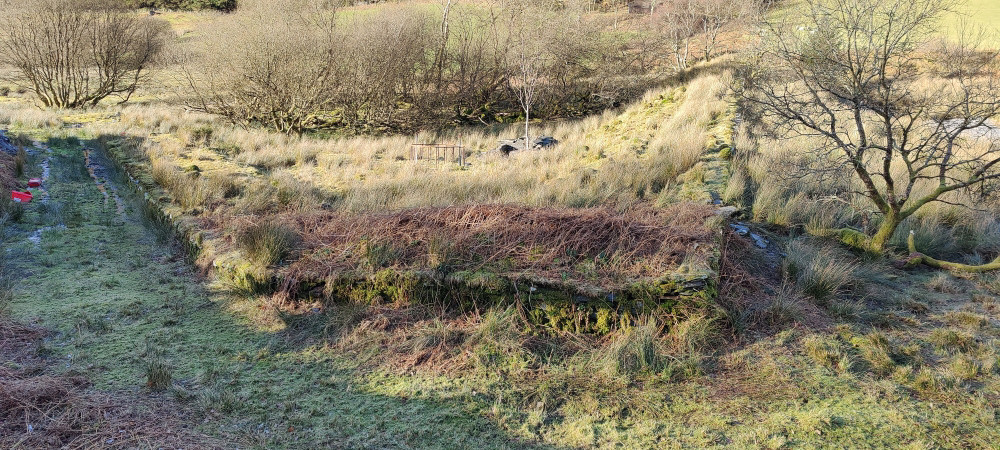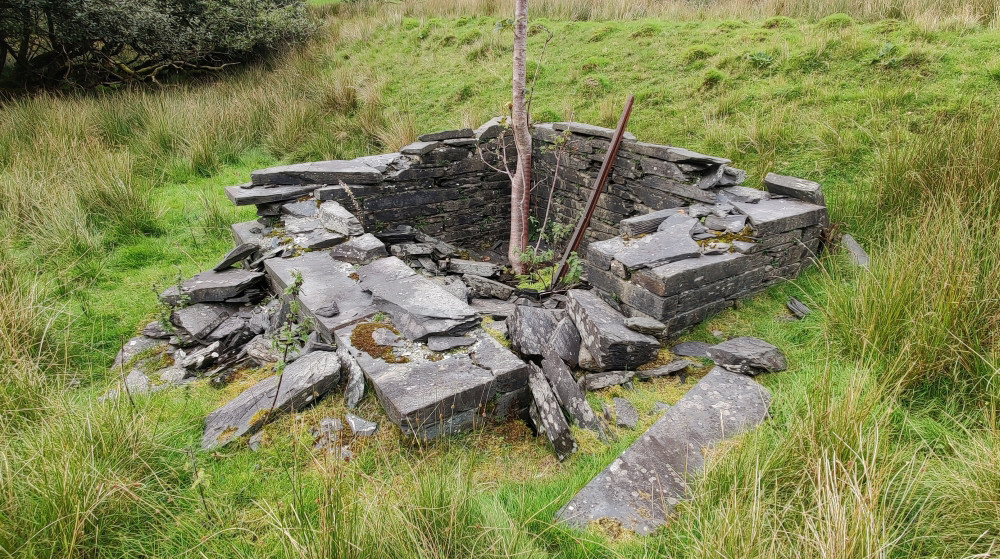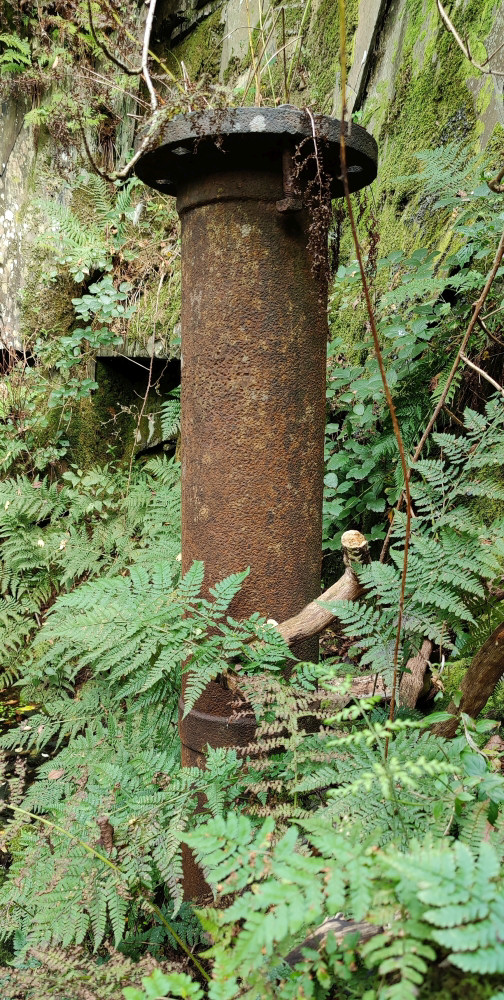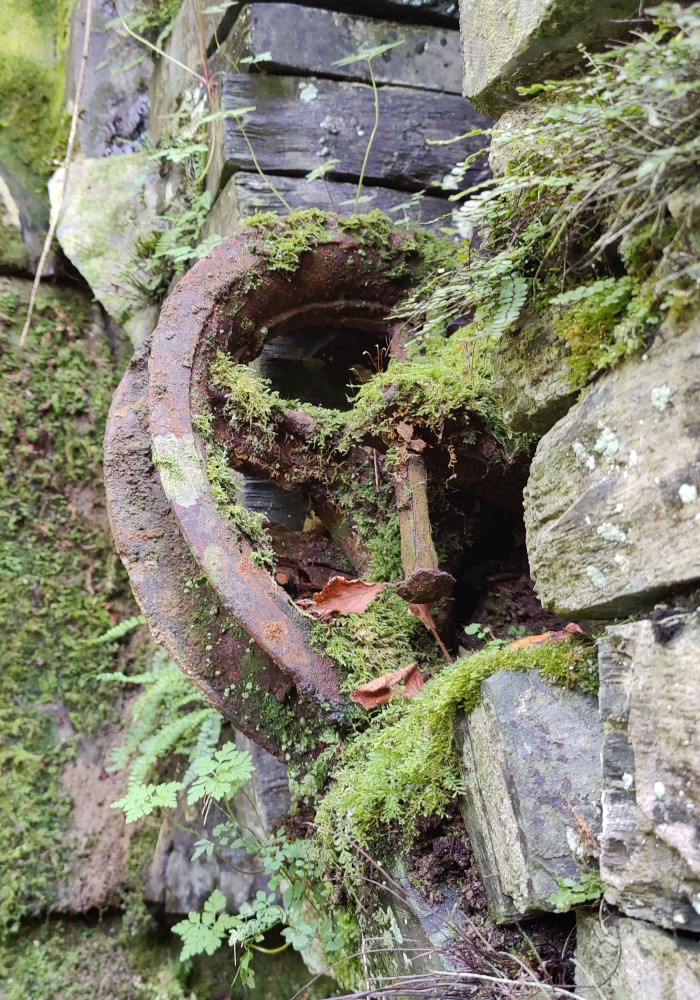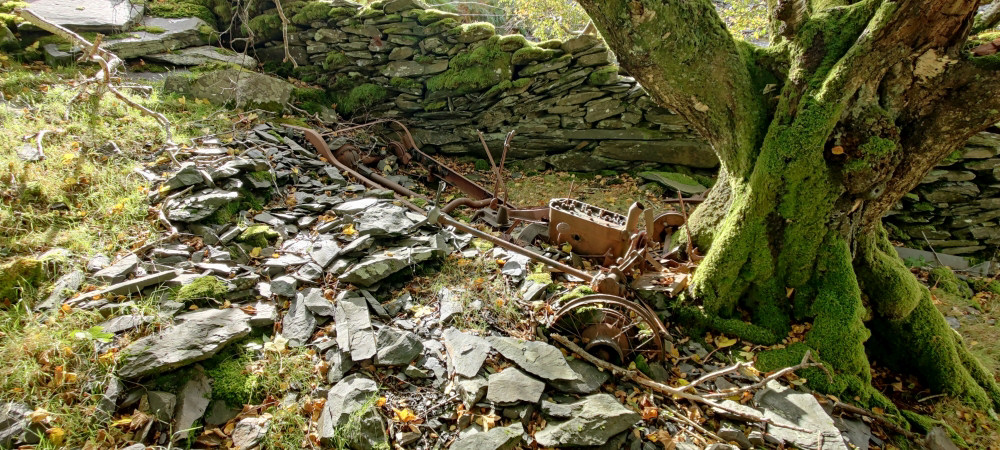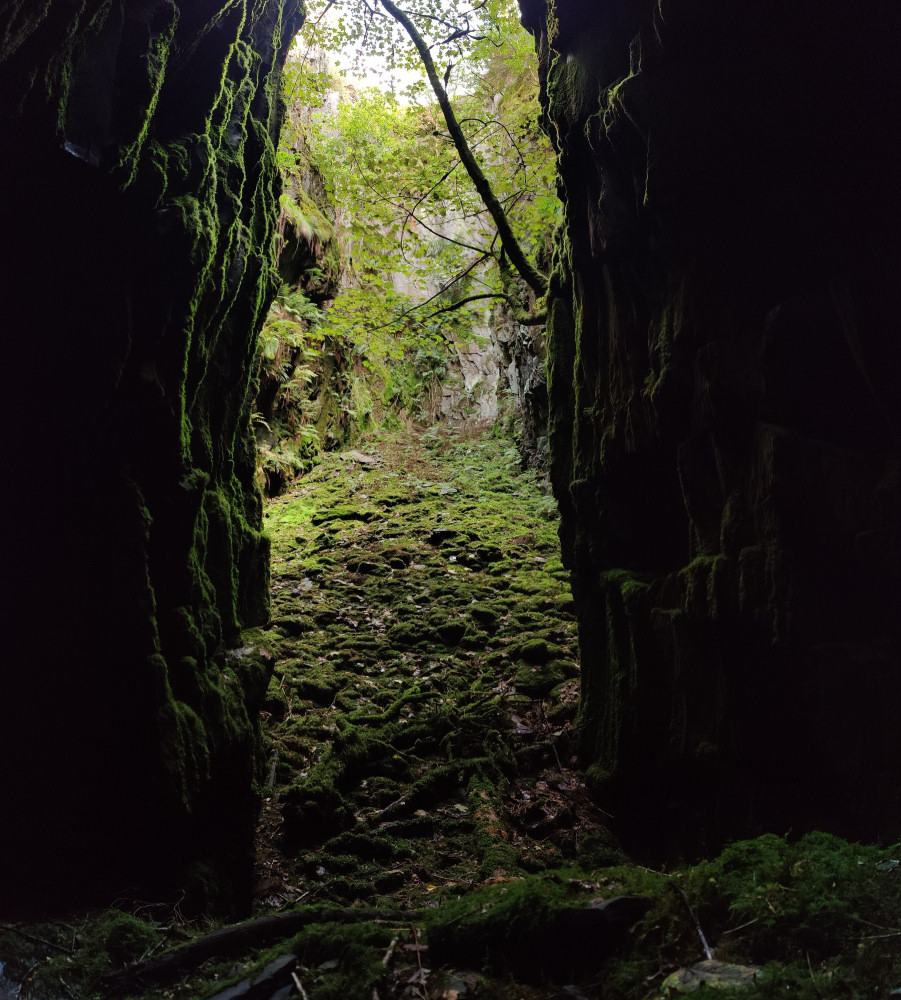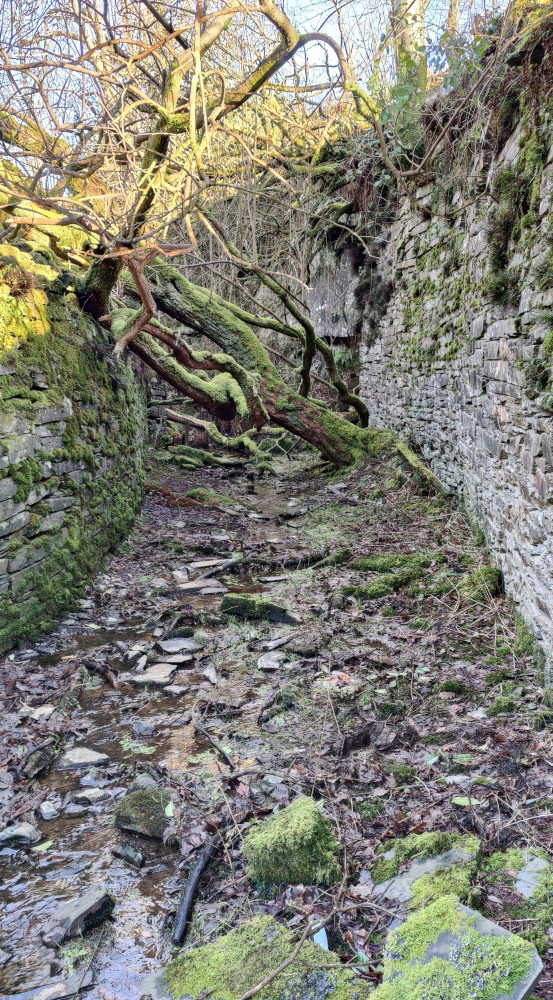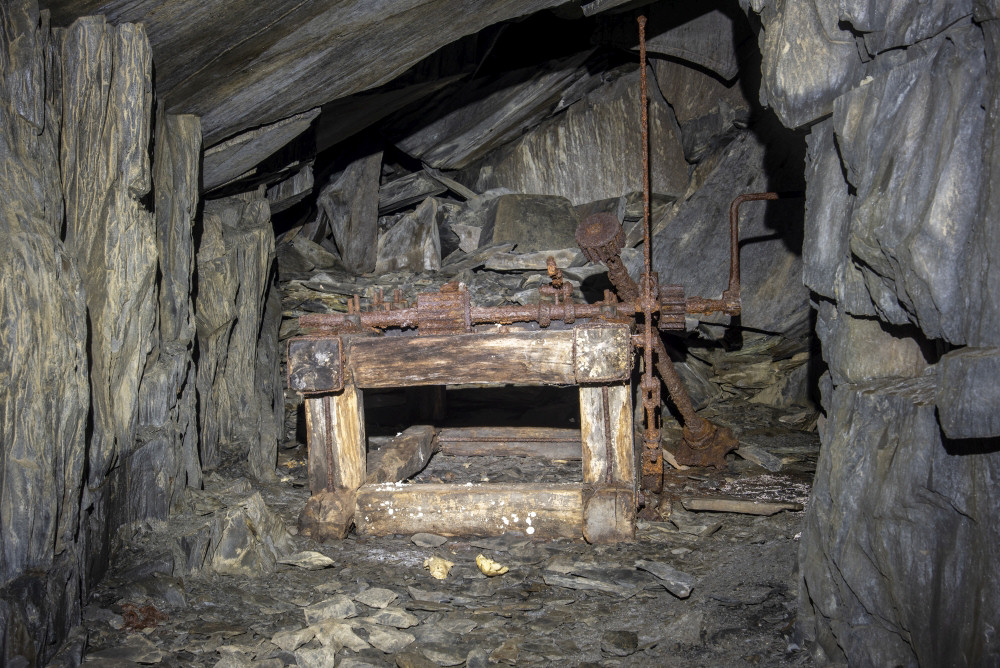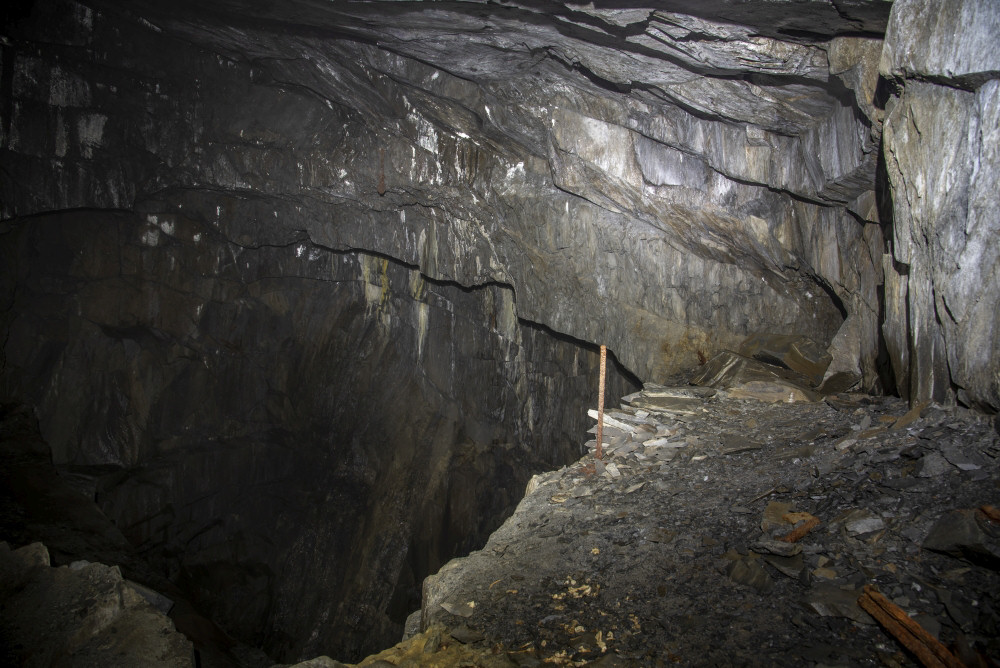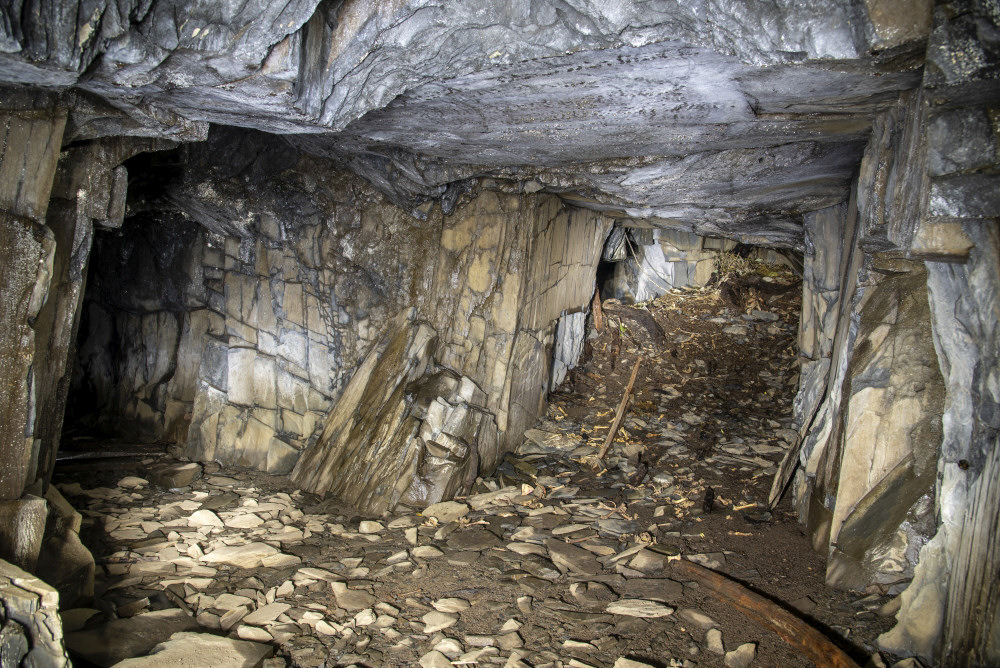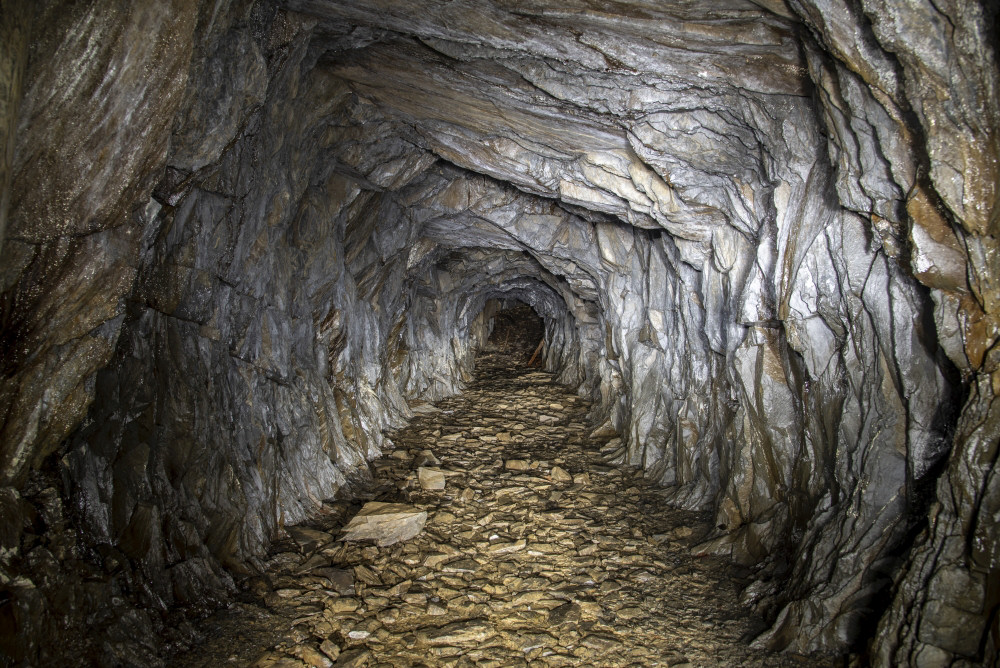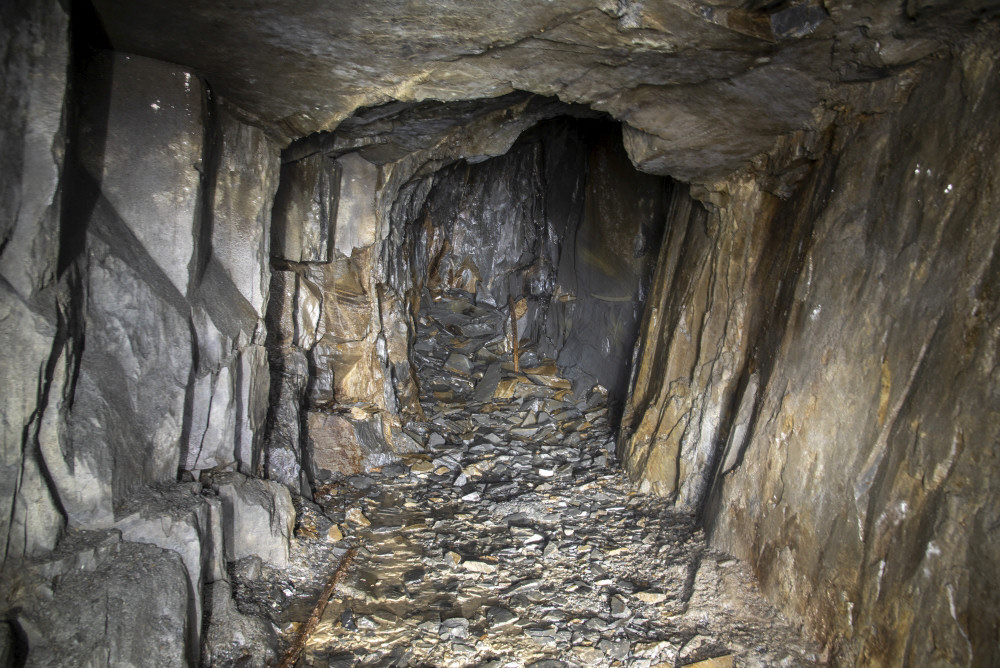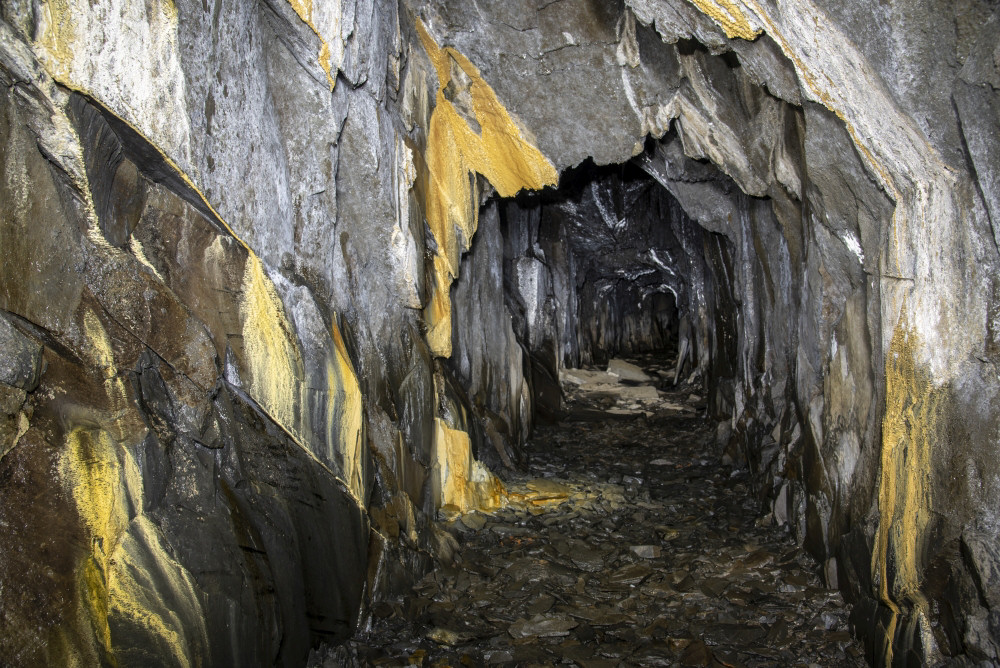Most people’s first view of Cymerau is likely to be the extensive tipping along the Nant Ceiswyn just upstream of it’s confluence with the Afon Dulas. It’s not immediately evident why there is so much slate waste here and the mixture of slab and mill waste might add to the puzzle at first. Heading North up the Ratgoed tramway, farm buildings and a row of four slate workers cottages come into view. The farm buildings incorporate the vestiges of the Cymerau Quarry mill. Over the last few years most of the, already small, remains have gone as the farm has expanded and changed the landscape. The mill was powered by a Pelton wheel until 1936, long removed.
Cymerau was worked from 1867 and through most of it’s life owned by the same people as it’s bigger neighbour Alltgoed (Ratgoed in later life).
The first workings were to the South - a short adit led to five chambers on the narrow vein, these were all below the water table and had to be constantly pumped.
Continuing you cross the river and pass the entrance to the flooded underground workings. There are pieces of an angle bob, a pulley and a rising main visible at the exit incline. Continuing past part of the leat which supplied the pump waterwheel then a few old/trial workings on the hillside before eventually arriving at the base of an incline from the second major part of the quarry.
This area was worked from the late 1870s and like many quarries it stopped and started as prices of slate fluctuated. Complete closure, with Ratgoed, came in 1946. Waste was mainly tipped on the hillside or below the incline. Good material went down to the mill by gravity on the Ratgoed Tramway, empty wagons pulled back by ponies. Cymerau used it’s own wagons and ponie rather than those used by Ratgoed. The finished product went out to the Corris Railway, again using gravity via the Ratgoed Tramway. Output was never high but quality was noted for its high quality. The mill shut before the quarry and after this time most processing was done at Groeslon, who owned the quarry at this point. Evidence of saw cut stone in the later walls and tramway side tipping suggests a portable saw was used around the base of the inlcine after the mill had closed.
The dam used for water supply to the Pelton wheel has been breached but remains in place along with a wide spillway (originally crossed by bridge). The penstock sluice remains but is burried and overgrown.
Publications (4)
- (1991); CATMHS - Newsletter 031-November; 31 pages
- (1995); CATMHS - Newsletter 043-July; 48 pages
- Eade, Sara (2010); Ratgoed A Study In Slate. pp.17-22. Sara Eade. ISBN: 9780956565204
- Richards, Alun John (1991); Gazeteer of the Welsh Slate Industry, A; Gwasg Carreg Gwalch 978-0863811968
